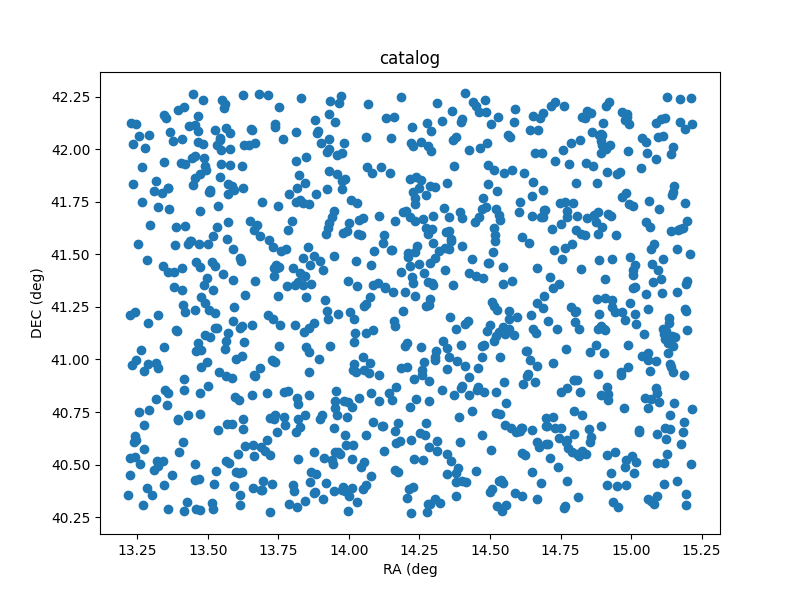Proof of concept code
The first iteration of our code is shown below. It was written in a stream-of-conscious mode with a focus on getting a minimum working example that proves that the work can be done.
#! /usr/bin/env python
# Demonstrate that we can simulate a catalogue of stars on the sky
# Determine Andromeda location in ra/dec degrees
import numpy as np
import math
# from wikipedia
ra = '00:42:44.3'
dec = '41:16:09'
d, m, s = dec.split(':')
dec = int(d)+int(m)/60+float(s)/3600
h, m, s = ra.split(':')
ra = 15*(int(h)+int(m)/60+float(s)/3600)
ra = ra/math.cos(dec*math.pi/180)
# make 1000 stars within 1 degree of Andromeda
ra_offsets = np.random.uniform(-1, 1, size=1000)
dec_offsets = np.random.uniform(-1, 1, size=1000)
ras = ra + ra_offsets
decs = dec + dec_offsets
# now write these to a csv file for use by my other program
with open('catalog.csv', 'w') as f:
print("id,ra,dec", file=f)
for i in range(1000):
print("{0}, {1:7.4f}, {2:7.4f}".format(i, ras[i], decs[i]), file=f)
The above code was saved as sim.py. When run from the command line it produces a file (catalog.csv) with a header, one thousand rows, and columns showing the id/ra/dec of the simulated points on the sky. Right now the code runs without error and at first glance does what we need.
If we plot the ra/dec locations of the catalog we get the following output:

sim.py program.